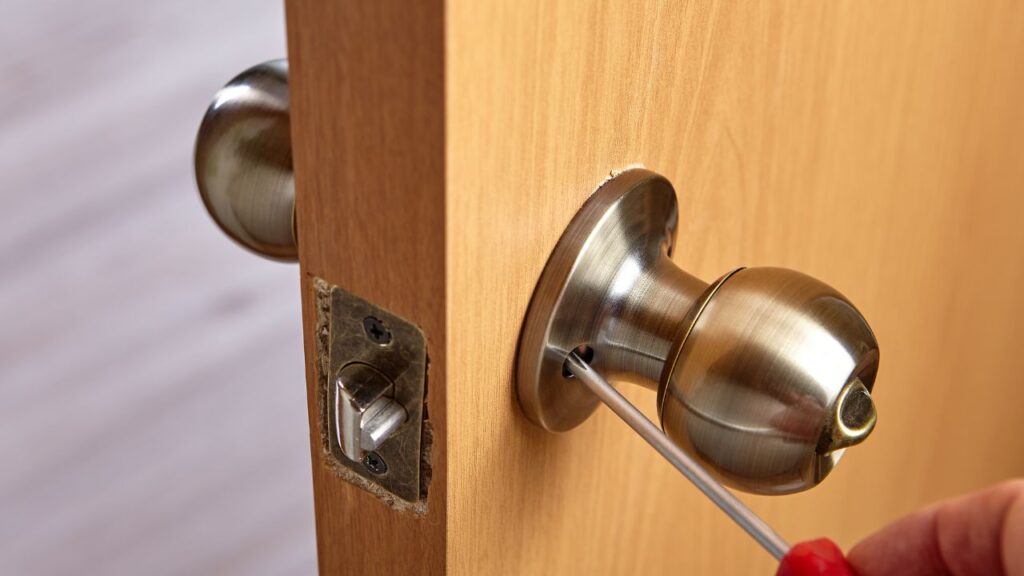The height at which you install your door handles can significantly impact your doors’ functionality and aesthetics. While many of us may not give it much thought, selecting the appropriate door handle height is crucial for ensuring accessibility, convenience, and overall design harmony in your living spaces. This guide will explore the considerations and best practices for determining the ideal door handle height for various types and settings.
Why Door Handle Height Matters
The height of a door handle might seem like a minor detail in the grand scheme of architecture and design, but it plays a crucial role in the functionality and accessibility of a space. The placement of a door handle determines who can easily use a door, whether it’s a standard entryway in a home or a public building. In the context of universal design principles, which aim to create environments accessible to all, the height of a door handle is a critical consideration.
A well-thought-out door handle height can make a space more inclusive, accommodating people of different ages, sizes, and physical abilities. It also has implications for safety, security, and overall user convenience. In this discussion, we will delve into why Door handle height matters and how it can impact our daily lives in ways we might not immediately realize.

The Role of Accessibility
Inaccessibility, the often-overlooked detail of door handle height, ensures equal access and usability for individuals of all abilities. The positioning of door handles might seem like a minor design consideration, but it holds significant implications for inclusivity. The height at which a door handle is installed can significantly impact the ease with which people, including those with mobility challenges, can enter and navigate a space.
Ergonomics and Comfort
The optimal placement of door handles reduces strain on the user’s body by promoting natural and effortless movements when opening or closing doors. Whether in residential, commercial, or public spaces, the ergonomic positioning of door handles can contribute to a seamless and comfortable interaction with the built environment, fostering a sense of inclusivity and user satisfaction. Design choices that prioritize appropriate door handle height underscore the importance of merging functionality with human-centred design principles.
Aesthetics and Design Harmony
A critical element in achieving Aesthetics and Design Harmony within a space is carefully considering door handle height. The placement of door handles may seem like a minor detail, but it plays a significant role in a room’s overall visual appeal and functionality. The height at which a door handle is installed can impact the flow of the space, accessibility, and the overall design aesthetic. For instance, in interior design, it’s essential to ensure that door handles are aesthetically pleasing and ergonomically positioned for ease of use. Properly aligned door handles contribute to the overall design cohesion and the seamless movement within a space, making it an integral aspect of creating an aesthetically pleasing and harmonious environment.
Standard Door Handle Heights
Standard door handle heights are essential considerations in architectural design and construction. These measurements ensure accessibility and ergonomic functionality for a wide range of individuals. In most cases, door handles are installed around 36 inches (91.44 centimeters) above the finished floor. This height is optimal because it accommodates the average person’s reach comfortably, allowing them to grasp and turn the handle without strain. However, variations in door handle height can be observed in specialized environments or to meet specific accessibility requirements. Adhering to standard door handle heights promotes ease of use and contributes to a space’s overall aesthetic and functionality.
- Interior Door Handle Height
The interior door handle height is a crucial consideration in architectural and interior design, as it directly affects the accessibility and functionality of a space. This measurement determines the door handle placement on interior doors, such as those found in homes, offices, and public buildings. Properly positioned interior Door handles ensure that individuals of all ages and abilities can comfortably and safely open and close doors without straining or reaching awkwardly. When determining the ideal internal door handle height, designers and architects must consider universal accessibility standards, ergonomic principles, and the specific needs of the building’s occupants to create aesthetically pleasing and user-friendly spaces.
- Exterior Door Handle Height
The Exterior Door Handle Height refers to placing or positioning door handles on the outer side of buildings or vehicles. This measurement plays a significant role in determining the accessibility and convenience of opening doors, particularly regarding ergonomics and user comfort. Properly positioned exterior door handles can enhance the overall usability of entrances and exits, catering to individuals of various heights and physical abilities. Design considerations for exterior door handle height can impact the ease of use, safety, and inclusivity of structures or vehicles, making it an essential aspect of architectural and industrial design.
- Bathroom Door Handle Height
The height of a bathroom door handle is crucial in ensuring accessibility and usability for all individuals. Standard bathroom door handle height typically falls 36 to 42 inches (91 to 107 centimeters) above the finished floor. This range accommodates most people’s needs, including those with mobility challenges or disabilities. Installing the handle within this range ensures that it can be comfortably reached and operated by a wide range of users, whether standing or seated. However, it’s important to note that specific regulations and guidelines might vary by region or building code, so it’s advisable to consult local accessibility standards to ensure compliance and inclusivity in bathroom design.
Installation Guidelines
The installation guidelines for door handle height are crucial to ensure both convenience and accessibility. Factors such as the intended users’ average height, mobility level, and potential regulatory requirements should be considered when determining the appropriate size for a door handle.
For standard interior doors, a common approach is to place the hold at around 36 inches (91.44 cm) from the floor, as this height tends to accommodate a broad range of users. However, in spaces where accessibility is a priority, adhering to guidelines outlined by organizations like the Americans with Disabilities Act (ADA) might be necessary.
These guidelines typically recommend a handle height ranging from 34 to 48 inches (86.36 to 121.92 cm) above the floor to ensure usability for individuals with varying degrees of mobility. Ultimately, the selection of door handle height should prioritize inclusivity, usability, and safety for all individuals who will interact with the Door.
- Tools and Materials
In the context of “Tools and Materials, Door Handle Height,” it’s crucial to consider the appropriate tools and materials when determining the ideal height for door handles. The right tools, such as tape, level, and pencil, are essential for precise measurements and alignment. Also, the choice of materials for the Door handle itself, including its finish and design, can significantly impact the Door’s aesthetic and functionality. Ensuring that the door handle height is ergonomically suitable for users is of utmost importance, as it affects accessibility and ease of use. Properly addressing this aspect contributes to the seamless and visually appealing door handle integration within a space.
- Measuring and Marking
Measuring and marking are essential steps in ensuring the precise installation of a door handle. Accurate measurements serve as the foundation for a secure and aesthetically pleasing placement. Begin by measuring the Door’s height and width to determine the ideal handle placement. Typically, the handle is installed at a comfortable height, roughly 36 to 42 inches from the bottom of the Door. Once the size is established, use a tape measure to mark the exact centerline of the Door’s thickness. This centerline will guide the placement of the handle and its corresponding latch or lock. Precision is critical in this phase, as any deviation can result in misalignment and functionality issues. Careful measurement and marking ensure your door handle looks good and functions smoothly.
- Installing Door Handles at the Correct Height
Installing Door Handles at the Correct Height is a crucial aspect of ensuring both functionality and aesthetic appeal in any architectural or interior design project. The proper placement of Door handles dramatically influences the overall user experience, as handles at the right height offer ergonomic ease of use.
When installing door handles, it’s essential to consider factors such as the average height of potential users, accessibility requirements, and the design theme of the space. A well-placed door handle enhances the seamless interaction with doors while contributing to the harmonious visual balance of the environment. Whether for residential or commercial areas, precision in installing door handles at the correct height is an essential detail that significantly contributes to the overall quality and comfort of the space.
Conclusion
In conclusion, the height at which you install your Door handles is a decision that goes beyond mere aesthetics. It’s a choice that can significantly impact both the accessibility and style of your home or space. As we’ve explored in this guide, there are several factors to consider when selecting the right door handle height.
Accessibility should always be a top priority. Ensuring that your door handles are at a comfortable height for everyone, including individuals with mobility challenges, is not only considerate but also crucial for creating an inclusive environment. By adhering to universal design principles and guidelines, you can make your home more accessible.












Commented Posts